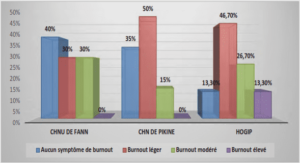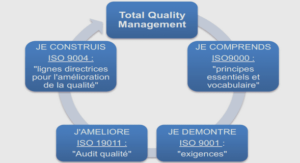Common expansion processes
The purpose of the tube expansion process is to close the gap between tube and tubesheet and to produce the contact pressure at the interface. By doing this, the flow stream from the primary to second circuit and vice versa is blocked. In this process, based on the expansion pressure level, the tubesheet undergoes either elastic or partially plastic deformation. Therefore, the level of the expansion pressure should be monitored to avoid tube over expansion, which could cause a full plastic deformation of the tubesheet, over thinning of the tube or its extrusion along the tubesheet bore.
There are four common expansion processes in the industry:
1) Mechanical rolling,
2) Hydraulic expansion,
3) Hybrid expansion,
4) Explosive expansion .
Mechanical rolling
his process is the oldest and the most used method for the expansion of tubes. The required time for this process makes it a favorite of manufacturers. The tube expander consists of three major parts.
1) Roller: This part is used to expand the tube’s inside diameter by applying an imposed displacement by the roller to increase the tube diameter and produce expansion. The number of rollers can vary from 3 to 7 rollers placed at an equal distance around the periphery;
2) Frame: This part holds the rollers and keeps them fixed at an equal interval. Any misplaced rollers lead to a dent forming inside the tube;
3) Mandrel: This component guides the rollers and controls the radial displacement. The mandrel, tube and tubesheet bore axis are concentric. The mandrel roller system is designed to obtain a perfectly inner circular surface of the tube. The mandrel acts by an electrical or pneumatic actuator and can reach speeds up to 1100 rpm.
In mechanical rolling, after releasing the rollers, the tubesheet springs back, compressing the tube to produce a residual contact pressure. Likewise, using this expansion process, the strength of the connection is increased significantly while generating high residual stresses and undesirable local deformations in the tube, resulting in stress corrosion cracking and stress concentrations. In addition, mechanical rolling results in a higher level of strain hardening in the tube material and a reduction in the contact pressure at the interface. The biggest disadvantage of mechanical rolling rests in the fact that the residual stresses of the tube cannot be estimated, due to the irregularities of the process and the difficulty in controlling deformation making the effective life of tubes impossible to predict.
Hydraulic expansion
The hydraulic expansion process was proposed by Westinghouse in the mid 70’s. As its name suggests, this method applies hydraulic pressure of water or other fluids to expand the tube. The elements of the hydraulic process shown in Figure 1.4 are as follows:
1) Probe,
2) Pump,
3) Booster,
4) Pressure gauge,
5) Overflow valve,
6) Hydraulic fluid tank,
7) Control valve.
Prior to loading, the secondary section is filled with fluid and the booster is placed in its initial position. Then, the pressure pump increases the pressure to run the expander (primary pressure) and the booster intensifies this pressure to the required pressure for expansion of the tube. During unloading, the overflow valve discharges the fluid to the tank to relieve the pressure. which achieves a homogeneous expansion pressure over the inner surface of the tube. According to Krips and Podhorsky (1976), the most important advantage of this process would be highlighted in the fact that the expansion pressure can be determined with high accuracy.
Like mechanical rolling, in this process, the tube undergoes plastic deformation prior to contact with the tubesheet. Also, both tube and tubesheet spring back during unloading, so the gap might not be fully closed along the tubesheet thickness; this can provoke stress corrosion cracking from the shell side, resulting in internal leakage between two circuits.
Hybrid expansion
For the first time, hybrid expansion was proposed by Krips and Podhorsky in 1979, three years after the invention of hydraulic expansion. After being acquainted with some weaknesses in the former method, the hybrid technique was invented to achieve an optimum design.
Hybrid expansion consists of hydraulic and mechanical rolling processes in succession. This method is able to expand the tubes with high strength materials or combined with multiple materials. The process starts with hydraulic expansion to close the clearance between the tube and tubesheet. Then, mechanical rolling is performed to remove the dents and undesired deformations over the inside surface of the tube in order for the joint to reach higher strength. In fact, after releasing the hydraulic pressure, the tube has enough time to return partially to its initial position, and this leads to the relief the residual stresses.
However, while hybrid expansion achieves superior quality in contrast with the two preceding processes applied individually, the required time for preparation and process is much longer. Therefore, the application of such a process is limited to high-sealed services.
Explosive expansion
Tube expansion by explosion was initially invented by Berman Irwin et al. in 1966. In this process, explosive plugs are placed inside the tube, and an explosion takes place to cause the tube expansion . The minimum required preparation time makes this process more desirable. However, explosion impact must be predetermined to have the least damage and unwanted deformation in the joint. In fact, in this process, any damage will lead to the tube plugging from both sides.
After detonation, the outer contact edge of the tube and tubesheet will be seal welded to reduce the possibility of leakage from shell side to head side and vice versa. In addition, mechanical rolling can be applied as a supplement to get a perfectly circular inner surface of the tube.
INTRODUCTION |





